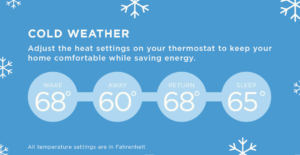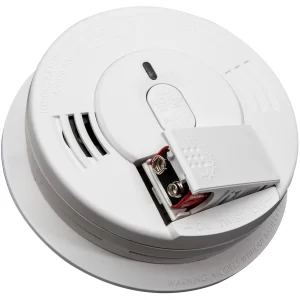Energy Efficiency in the Winter Months
There has been so much research done on energy loss from our single-family homes during the winter months. It is important to be aware of ways that you can help your property be as energy efficient as possible. Whether or not you pay the energy bill or your tenant does, these tips will add value to your property and help keep your property functioning well and your tenants happy, as well as saving someone a few bucks.
Property Tips
It is surprising how much heat seeps to the outside through any cracks and unsealed openings on your property. We have been performing seasonal inspections of single-family homes for years and here are a few areas we recommend you check for energy efficiency and heat loss.
Windows and Doors Seals
We recommend that each window and door be checked for an intact seal during the fall. There are a surprising amount of small cracks and slits that open up throughout the summer months. Most of these can be repaired simply by replacing the seal. Repairing seals are very inexpensive and can improve your energy efficiency significantly.
If your property has single-pane windows, we also recommend installing some window-sealing plastic on any large windows. The plastic will reduce your heat loss and reduce the potential water damage that comes from excess condensation.
Ceiling Fan Direction
Make a note, or have us include it in our winter property prep, to change the direction of your ceiling fan rotation for the winter months. A clockwise spin pulls cold air up and pushes warm air down where you can feel it. Most fans have a small sliding button that will switch the direction of the spin. This minor adjustment keeps the room feeling warmer and helps your tenants keep their daytime temperature close to the recommended 68*.
Along this same line, Yes, using the fans during the winter keeps the rooms warmer. Just keep the fan running on low and make sure it is spinning in the correct direction.
Thermostat Tips
What is the ideal temperature for a home during winter?
The ideal temperature for a home during the winter months fluctuates according to Energy.gov. While it might seem that a stable 68* temperature would be the most energy-efficient, many studies have shown that changing the indoor temperature throughout your day can save energy and the cost associated.
The official recommendation from energy.gov is to keep your house at 65* during the night, 68* when you are home and awake, and 60* when you leave the house.

Graphic from: https://www.scanaenergy.com/blog/blog/2020/12/01/ideal-thermostat-settings-for-cold-weather
Using a Programmable Thermostat to Save on Heating Costs
We recommend that you install a programmable thermostat for each of your properties. Most programmable thermostats can hold multiple different times and temperatures. This allows your tenants to program their typical schedule. They can also easily adjust the temperature if their schedule changes.
How much does Lowering the Temperature actually save in Energy Costs?
When the indoor and outdoor temperatures are closer to each other, it slows down the heat loss through windows and doors in our house. Studies have shown that your total energy output can be reduced by as much as 10% by lowering the temperature by 7*-10* for 8 hours a day. According to EnergyHub.com, it can even be as much as 3% for each degree lowered. So, if you have a $200 energy bill, you can save up to $20 a month, just by sleeping cooler at night. You can also look up the additional benefits of cooler temps on your sleep quality.
Cost of Programmable thermostats
Let’s quickly review the cost of programmable thermostats and their installation. Programmable thermostats range from less than $50 to over $200. Some will have your basic 1 or 2 programmable temperatures, while others are fully wifi capable and controllable by an app. We always recommend that you have a thermostat that allows for multiple settings and has a quickset away button.
Your thermostat needs to be installed by a licensed electrician. The installation usually takes less than 2 hours with the typical hourly rate for a licensed electrician being around $85.
Hopefully, these few tips will help you reduce energy consumption and costs. We create a winter prep checklist for each of the properties we manage. If you do not have a property manager, then we recommend you do the same. A detailed yet manageable checklist can help keep your property efficient and your tenants happy for years to come.



